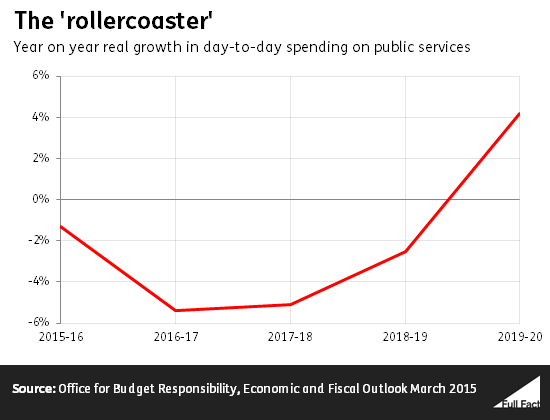Public services spending: are we in for a 'rollercoaster' ride?
Public services face a "rollercoaster" ride over the next five years, the Office for Budget Responsibility (OBR) has predicted after the Chancellor laid out the government's spending plans in the pre-election budget last week.
The OBR, responding to the government's plan to tighten spending in the early part of the next parliament, said that there will be a "much sharper squeeze on real spending in 2016-17 and 2017-18 than anything seen over the past five years followed by the biggest increase in real spending for a decade in 2019-20."
The problem is that this might not be the spending path we get. This is a coalition government, and these plans assume that the coalition's policies will be carried out. But as the OBR notes, "both parties in the Coalition have said that they would pursue different policies if they were to govern alone" and Labour has also set out different plans.
This leaves us in the position of having an official set of forecasts that are almost certain to be wrong.
As for why this particular spending path has been chosen, there's a telling line in the OBR's Economic and Fiscal Outlook.
Discussing the effects of the Budget on future spending, they note that the policy decisions ensure "that public spending as a share of GDP no longer falls to a new post-war low in 2019-20".
This means that Labour's claim that the government's plans would cut spending as a share of GDP back to the levels of the 1930s might now be obsolete.
